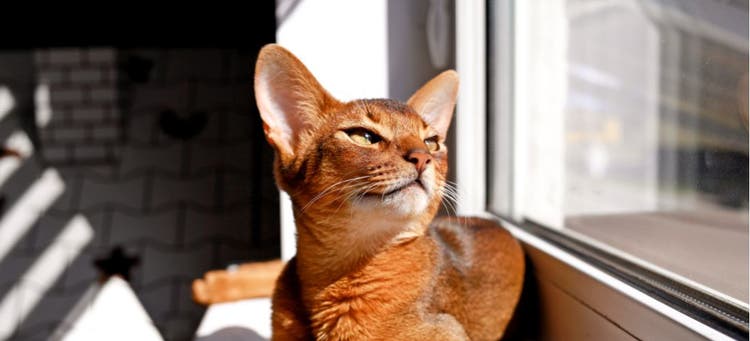
Keeping Cats Cool
The dog days of summer can be rough on cats. Though their coats help to regulate body temperature, they’re at a distinct disadvantage when it comes to keeping cool. We’ve got a broad network of sweat glands to cool us down and stave off conditions like heat stroke. Cats, however, have to make do with a comparatively scant number, localized mostly in their paws. They can’t strip down to lighter clothing either!
Heat-Related Illnesses
There are four different types of heat-related illnesses that pets and pet parents can experience. Here they are, listed from the least to most severe:
- Heat Stress: Body temperature remains normal, clinical signs and discomfort are relatively mild.
- Heat Cramps: Body temperature is still normal, but physiological changes may begin with difficulty walking or a slight limp.
- Heat Exhaustion: Body temperature may be normal, slightly elevated, or slightly decreased. Clinical symptoms have become more severe, including cramps, weakness, and anxiety. In severe cases, loss of consciousness may occur.
- Heat Stroke: The most severe type of heat-related health condition, heat stroke can have deadly consequences. There are two forms: exertional and non-exertional. The former is more common in people than in pets, most often seen in elite athletes. Though certain animals like racehorses and Greyhounds may suffer from exertional heatstroke, animals are more likely to experience the non-exertional variety as a result of environmental factors like high temperatures.
Keeping Your Cat Cool
Even if you’ve got central air conditioning and plenty of shady space, you may need to take some extra precautions to ensure your cat doesn’t overheat in summer weather.
- Offer plenty of water: Hydration is key for staying cool and avoiding heat-related illness. Make sure your cat always has access to clean, cool water throughout the day. Toss in a few ice cubes too.
- Try a cool towel: While heatstroke is most definitely a concern for dog owners, keeping pups cool is comparatively simple. Most dogs won’t mind getting hosed down or taking a dip in the pool or tub to lower their body temperature. Cats are less fond of water, so owners need to be slightly more delicate in using it to cool them off. Vets suggest dampening a towel and using it to lightly stroke cats.
- Find the right location: Create an ideal resting place for your cat by selecting a shady, cool location for your cat to relax. Elevate their bed and furnish the area with a fan to keep them even cooler.
- Create a homemade cooling pad: Cool down your kitty’s favorite lounging spot by filling a plastic bottle with water and tossing it in the freezer. Once the bottle’s contents have frozen, wrap it in a blanket so that your cat can fight the heat by lying beside it.
- Choose playtime hours carefully: Don’t get your cat too riled up during the hotter hours of the day. Instead, discourage heat stroke and over-exertion by limiting playtime to dawn and dusk when temperatures are a little cooler.
Signs Your Cat Is Overheating
Keep an eye out for these telltale signs of heat-related illness, especially when the mercury is rising.
- Excessive panting
- Restlessness
- Elevated heartbeat
- Vomiting
- Loss of consciousness
- Lethargy
- Drooling
- Weakness
- Red gums
Heat-Related Illness: High-Risk Cats
Any cat can experience negative reactions to heat, but these feline populations may be more vulnerable:
- Overweight or obese cats
- Pregnant cats
- Brachycephalic (flat-faced) cats, including breeds like the Persian, Himalayan, and Burmese
- Elderly cats
- Kittens
- Cats with respiratory or heart conditions
- Cats who are prone to dehydration
Watch these cats closely for signs of trouble and get ready to intervene or call your veterinarian if necessary.